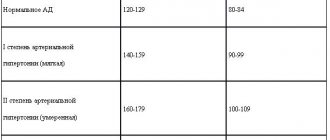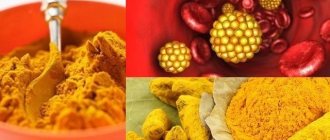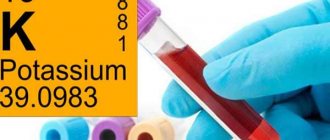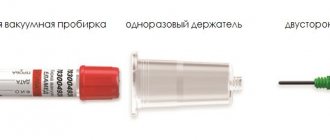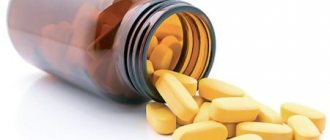There is probably no person who does not know this plant. Mint is used in cosmetics, cooking, perfumery, medicine and other fields. The main active component contained in its tissues is menthol, which is included in medications.
This article will discuss whether there is a connection between blood pressure and mint, and how hypertensive patients should use it to benefit their health.
Young peppermint leaves
The benefits of mint for the body
Mint contains ingredients valuable for humans, such as tannins, flavonoids, menthol, organic acids and other micro- and macroelements.
Due to its composition, the medicinal plant has the following effects on the human body:
- helps strengthen the walls of blood vessels;
- eliminates headaches;
- relieves vasospasm;
- Increases the permeability and elasticity of arteries and veins;
- normalizes heart rhythm;
- Prevents the formation of atherosclerotic plaques;
- Flavonoids reduce the fragility of blood vessel walls;
- Has antioxidant properties;
- reduces pain;
- normalizes vascular tone;
- helps improve blood circulation;
- eliminates inflammation.
Peppermint also has an astringent effect. This plant also has other beneficial effects: it calms, strengthens the immune system, and improves metabolic processes.
Therefore, it is used in the treatment of many diseases, including those associated with blood pressure disorders.
Pharmacological properties
Common mint, which is most often cultivated in garden plots
At the moment, a large number of plant varieties have been cultivated (tender, fragrant, field, garden, ornamental, and so on), however, peppermint is more suitable for use for culinary and medicinal purposes; in second place is marsh mint, which grows en masse in humid ecocenoses and along the banks. These types contain more menthol and other beneficial substances.
Interesting information. Cosmetologists recommend using a fragrant decoction for the skin when taking baths and in hair care. Doctors advise rinsing areas of inflammation when there are diseases of the oral cavity and teeth. In ancient Rome, when teaching young people, mint stems were woven into wreaths that were placed on the head; it was believed that its phytoncides enhanced brain function.
Mint has a wide range of positive effects on the human body:
- calms the central nervous system, significantly improves sleep;
- dilates blood vessels;
- has astringent properties;
- exhibits a mild analgesic effect for menstrual pain in women;
- alleviates toxicosis during pregnancy;
- stimulates digestion and improves appetite;
- relieves spasms during headaches;
- normalizes gastric and intestinal microflora;
- stimulates bile production and has a mild diuretic effect.
The leaves of the plant are often added to tea to give the drink a unique aroma. During a cold, it is recommended to brew this drink more often and make it richer. This helps with diseases of the upper respiratory tract, especially if you use honey instead of sugar.
Mint for high blood pressure
Peppermint may reduce short-term high blood pressure and help with headaches
The plant has a mild hypotensive effect. It is important to understand that for the treatment of hypertension or other problems of the cardiovascular system, as an alternative to medications, peppermint is not suitable, but its biochemical components can have a vasodilating effect, relieve spasm of the veins and arteries in the brain, have a calming effect on the central nervous system, which helps normalization of pulse and blood pressure. Based on the foregoing, it is not difficult to conclude that mint with high blood pressure can be useful for healthy people or people with the initial stages of hypertension.
The main active ingredient that stabilizes blood pressure (reduces peripheral vascular resistance) and brings situational vasospasm back to normal is menthol. Thanks to essential oils, blood vessels dilate and the rhythm of the heart calms down. Therefore, if a person feels a headache after a working day or during a sudden change in weather, he should drink one or two cups of rich mint tea.
The price of this product is minimal, and the result is reliable, but no synthetic substances enter the body and side effects are extremely rare. More details about the beneficial effects of mint on the cardiovascular system can be seen in the video in this article.
Note. Well-known drugs that dilate blood vessels, for example, validol, valocordin and others, contain menthol. Therefore, there is no doubt that mint lowers blood pressure and helps normalize cardiac function.
Contraindications
Menthol is dangerous for people suffering from bronchial asthma
Like any other natural remedy that includes biologically active components, its use has certain limitations.
It is not recommended to use recipes containing mint without a doctor’s recommendation in the following cases:
- children under 3 years old;
- with varicose veins (meaning the consumption of significant doses), because this leads to relaxation of venous tone;
- before and during work that requires increased attention, since mint-based products may cause drowsiness;
- persons with chronic low blood pressure;
- with gastritis with high acidity, with frequent heartburn;
- since mint is an essential oil plant, excessive consumption in men reduces potency and libido, and in women who cannot get pregnant for a long time, the problem may worsen;
- during lactation;
- in case of disorders of the liver and excretory system organs;
- for allergy sufferers, people with bradycardia and bronchial asthma, menthol can provoke an exacerbation, cause bronchospasm, suffocation and even anaphylactic shock;
- in case of individual intolerance to one of the components in mint;
- not recommended for people suffering from constant fatigue syndrome.
Types of mint and its choice
There are many varieties of mint:
- peppermint;
- longleaf;
- fragrant;
- lemon;
- menthol;
- Japanese;
- ginger;
- dogwood;
- curly;
- field plant.
All of these plant varieties are used in alternative therapy.
Peppermint, which has healing properties, helps with hypertension. Melissa, commonly known as lemon balm, is used as a remedy.
To treat high blood pressure, use both fresh and dried herbal leaves. The use of peppermint essential oil has also been shown for many ailments.
Composition and beneficial properties
The smell of mint is known to everyone because it contains menthol, which is part of the essential oil of this plant. This substance is included in many cardiac medications because it dilates coronary vessels, stimulates the heart, and soothes headaches.
The grass contains a number of microelements: potassium, magnesium, iron, phosphorus. The leaves of the plant are rich in vitamin B, retinol, ascorbic and nicotinic acids, and carotene. Organic acids include oleic acid, caffeic acid, ursolic acid and chlorogenic acid, which is part of mint. They are necessary for the proper functioning of the digestive organs as an important part of the processing of nutrients.
Mint is used as:
- as a diaphoretic, choleretic and antipyretic agent;
- sedative for insomnia, nervous agitation;
- drugs that help patients cope with the symptoms of cholelithiasis and colds of the digestive tract;
- help people suffering from sore throat, diseases associated with cerebral vasospasm.
In addition to medicine, mint is used in perfumery and the food industry as a flavoring for drinks, sauces and liqueurs.
How to take with high blood pressure
Due to its vasodilating, antispasmodic and sedative effects, peppermint products are used in folk medicine to treat hypertension.
The following mints are useful for high blood pressure:
- essential oils;
- decoction;
- tea;
- Infusion in pure form or with the addition of other medicinal plants.
In some cases, raw leaves can be used.
To lower blood pressure, it is better to drink mint tea. People with hypertension drink it well in hot weather. You can add a slice of lemon or honey to it. This tea is used to prevent high blood pressure.
During the day you should drink mint tea in an amount of no more than three glasses.
Peppermint oil is used in acupressure massage and aromatherapy treatments. It is also added to baths to regulate blood pressure.
Before using medicinal herbs, consult a medical specialist about the advisability of taking them.
Effect on pressure
Menthol contained in peppermint leaves has antiduncillary properties: dilates blood vessels, reduces the strength and speed of blood flow, which lowers blood pressure and reduces the risk of coronary heart disease and other internal organs.
The plant is part of the drugs (Validol, Valocordin, Zelenic drops) used for diseases that are accompanied by shrinkage of coronary vessels and smooth muscles.
In addition to its antuscathular action, mint has a calming effect. Recommended for use for nervous hypertension, stress, problems falling asleep:
- He removes the SPEAKY command;
- eliminates symptoms of hypertension;
- calms, reduces heart rate, which reduces the risk of heart attack and stroke;
- Improves the condition in Tachakardia, painful Dusznica, neuralgia.
People with hypertension cannot take plant-based, use essential oil. Dilation of blood vessels at low pressure will only make things worse.
Contraindications for use
Frequent mint intake for low blood pressure is not recommended. In addition, other contraindications for the use of plants are:
- varicose veins;
- Frequent occurrence of heartburn;
- Breastfeeding period;
- sensitization to menthol;
- Individual hypersensitivity to mint substances;
- Hepatic impairment;
- increased drowsiness;
- Kidney disease.
Do not use mints on children during the third year of life. The older children receive poor tea from this plant.
Women are advised to drink mint with caution during pregnancy.
In large quantities, you should not take mint for men who have potency drops, as well as for women who have problems with the concept.
How does it affect men and women - is there a difference?
With high blood pressure in men and women, mint has the same effect - it lowers it. However, contraindications to the medicinal plant are different:
- Women should avoid consuming mint during pregnancy and lactation, since some enzymes are transferred to the child along with milk and can negatively affect his cardiovascular system.
- Men should also use it with caution, because it reduces the production of testosterone (male sex hormone).
Recipes with mint
There are many rules using this medicine.
Mint tea
To prepare it, take a dried plant leaf in the amount of teaspoons. It soaks in a glass of cool boiling water for about 15 minutes. Then strain.
Fresh leaves can also be used for this purpose. A small amount of them is needed for tea infusions, only two or three parts.
Mint decoction
To make it two tablespoons of fresh leaves, we raise a liter of water and cook on low heat for ten minutes. Insist until infusion breaks.
Infusion
To prepare this medicine, pour a cup of boiling water over a tablespoon of dry leaves or a teaspoon of raw material. This should be left to steep for at least two hours.
Composition of garden mint
Its composition will help to assess the medicinal potential of mint. The main component that provides the plant with a refreshing effect is essential oil, which largely contains menthol. In percentage terms, its concentration is distributed as follows: maximum - in inflorescences (6%), a sufficient amount - in leaves (up to 2.7%) and a little more - in stems (approximately 0.3%).
In addition to menthol, the healing plant is rich in other beneficial substances:
- Flavonoids;
- Microelements;
- Organic acids;
- Tannins.
Thematic forums often discuss the question of whether mint increases blood pressure. By expanding the lumen of blood vessels, menthol helps to reduce peripheral vascular resistance, thereby increasing the volume of freely circulating blood. This explains the hypotensive effect of mint.
You can learn more about the composition and beneficial properties of mint from this video.
Do you still have doubts about whether mint increases blood pressure? If you study the composition of such popular vasodilator medications as Validol or Valocordin, you will notice that they necessarily contain menthol. It is he who helps relieve spasms in the cerebral vascular system, normalize blood pressure and the functioning of the heart muscle.
Recipes with mint and other medicinal herbs for high blood pressure
There are many medicines based on mint and other medicinal plants for hypertension as an alternative therapy:
Other medicinal plants, the main component of which is mint, also have antihypertensive properties:
- with carnations;
- with raisins;
- Social Berries;
- with dried cranberries;
- Collection of mint, Dziegarz, Glog and Valerian;
- Alcoholic tincture from a collection of peonies, thyme, mint, eucalyptus, valerian.
Before treating with these measures, you should consult your doctor about the possibility of using them.
Peppermint is a good way to relieve contraction of blood vessels and headaches due to high blood pressure due to the substance it contains which has the effect of shrinking blood vessels. However, it is important to know how to properly use the herb in treatment and what are the contraindications for its use.
Pharmacy products
Mint is available in the following forms:
- Four pepper resorption granules - used as part of complex therapy to reduce muscles, blood vessels, eliminate nausea, increase appetite;
- Dried peppermint leaves - powder in filter packaging for making backyard, infusion, tea;
- Alcohol tincture of mint - used to relieve nausea, vomiting, narrowing of blood vessels, muscles, kidney, bile, intestinal processes.
Pepper leaves are part of the stomach, countering, soothing collections.
Which type of plant is particularly detrimental?
There are many types of mint:
- curly;
- pepper;
- home;
- swamp and others.
They all have approximately the same effect, but, nevertheless, there is a difference.
Peppermint (a hybrid of water and garden mint) has been widely used in medicine due to the high content of menthol oil in its composition. It is this that has vasodilating properties, so we can safely say that the pepper variety most effectively helps with high blood pressure.
Precautions for hypertension
In order not to harm your body, you need to know when to stop. This applies not only to mint, but also to other medicinal herbs and drugs. So:
- Before using any type of mint (scented, peppermint, garden), you should make sure that there is no individual intolerance, because an allergic reaction will follow immediately and have a negative impact on the body.
- If you consume mint in unlimited quantities every day, the functioning of the gastrointestinal tract will be disrupted.
- If you have hypotension, you should avoid medications containing mint. However, let’s say, nothing will happen from a cup of tea once a week with this fragrant plant, because we are talking about systematic use.
- It is better not to offer mint to children under 4-5 years of age, since its effect on the body has not yet been fully studied.
Can it cause harm?
The dosage of drugs containing mint must be strictly observed, otherwise it is fraught with dangerous consequences. In case of overdose or long-term use of such drugs, the functioning of the heart (bradycardia, arrhythmia) and respiratory center (slowdown, even stopping) is disrupted. The use of such drugs is contraindicated in certain diseases (bronchial asthma, a number of cardiovascular pathologies). Self-medication in such cases is unacceptable. The same applies to using an infusion of decoction or tincture. Rare use in small quantities will not cause harm, but systematic use can be life-threatening.
Those with low blood pressure (hypotension) should take mint with extreme caution. A small amount drunk occasionally will not harm, but you should not use systematically, much less concentrated tinctures or decoctions. After taking mint products, hypotensive patients may experience dizziness, weakness, bradycardia, and blood pressure, which is already low, may decrease even more.
